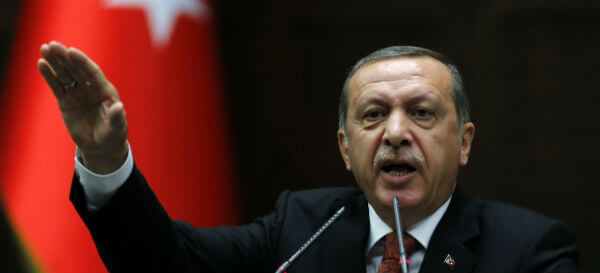Jeremy Miller writes: In a rumpled suit jacket and faded jeans, Giles Slade stands atop an earthen levee and looks out over a vast expanse of water. It’s mid-November, and the Fraser River runs gray and glasslike into the Salish Sea. Overhead, airplanes flash through low clouds, descending into Vancouver International Airport. To our backs is the city of Richmond, British Columbia, splayed out on the table-flat delta, the majority of its homes and buildings set just a few feet above sea level. “You can begin to see the scale of our problems from right here,” he says, waving a hand across the gray swath of water and sky.
Slade, 62, resembles a svelter John Goodman. He wears hip glasses, and his sentences are delivered in a calm, professorial baritone. But his mellow demeanor belies a deep anxiety, rooted in the threats posed by climate change to the Pacific Northwest, and to his flood-prone town of 190,000. He’s channeled that angst into a gripping work of non-fiction titled American Exodus (the title is an homage to An American Exodus, a book about the Dust Bowl published in 1939 by economist Paul Taylor, with photographs by Dorothea Lange). Slade’s book offers a disaster-movie account of the days ahead for North America — a future defined by epic drought, megafires, colossal hurricanes, rising seas, and the massive human migrations that such events are likely to spawn.
The idea for the book dates back to the late 2000s, when Slade began to note numerous climate-driven migrations happening in the developing world. “There was a lot of material on climate migrations in Somalia and some other parts of the world,” he recalls. But at the time he could find no resources exploring how climate change might affect human populations in North America. Could things here reach a sort of climatic tipping point, Slade wondered, forcing people to move suddenly and in large numbers? “I was surprised to find that there were things that were already happening,” he says, mentioning Mexico and Central America, where prolonged drought, combined with violence and economic and political instability, has triggered the movement of tens of thousands of people northward over recent decades.
As he pored over the climate data, he became obsessed with one particular scenario. With drought intensifying in California, Slade envisioned a new Dust Bowl situation, in which tens of thousands of people evacuate the drought-ravaged southwestern United States and stream into the Pacific Northwest. Would the Oregon state line become like the U.S.-Mexico border? “That scenario,” Slade says, “seems closer and closer every day.”
For years, publishers weren’t interested in his ideas. “I was told by several U.S. publishers that climate change wasn’t happening,” he says. “Others viewed it as a boring disaster book with an unlikely prediction.” Things changed in October of 2012, when Superstorm Sandy blasted New York, forcing thousands of evacuations from the U.S.’s most populous and high-profile city. “I got a call and an offer the same week.”
One might be inclined to dismiss his predictions as the products of an overactive imagination (Slade spent his early years writing military novels for Harlequin Books) — that is, if the book weren’t so meticulously researched and reported. And then there’s the fact that Slade is no longer the only one talking in such stark terms about climate-driven migrations.
“What we’re seeing in Europe now with mass migrations, that will happen in California,” declared California Governor Jerry Brown last fall at a press conference. “Central America and Mexico, as they warm, people are going to get on the move.” In a recent talk to U.S. ambassadors, Secretary of State John Kerry painted a similar scene: “There’ll be climate refugees that all of you will be coping with at some point — if not now, in the not-too-distant future.”
Recent data underscores these predictions. A study from the Centre for Research on the Epidemiology of Disasters estimated that, between 1994 and 2014, as many as 3.5 billion people worldwide were affected by flooding and drought. More recently, a study in the journal Science Advances estimated that four billion people — roughly two-thirds of the entire human population — experience severe water shortages for at least one month out of every year.
And yet, here in the U.S., we tend to think of severe climate disruption as something that is happening elsewhere. According to recent Gallup polls, 60 percent of Americans accept that climate change is happening, and 57 percent believe that it is caused by human activities — but only 36 percent believe it poses a threat to their way of life. [Continue reading…]






